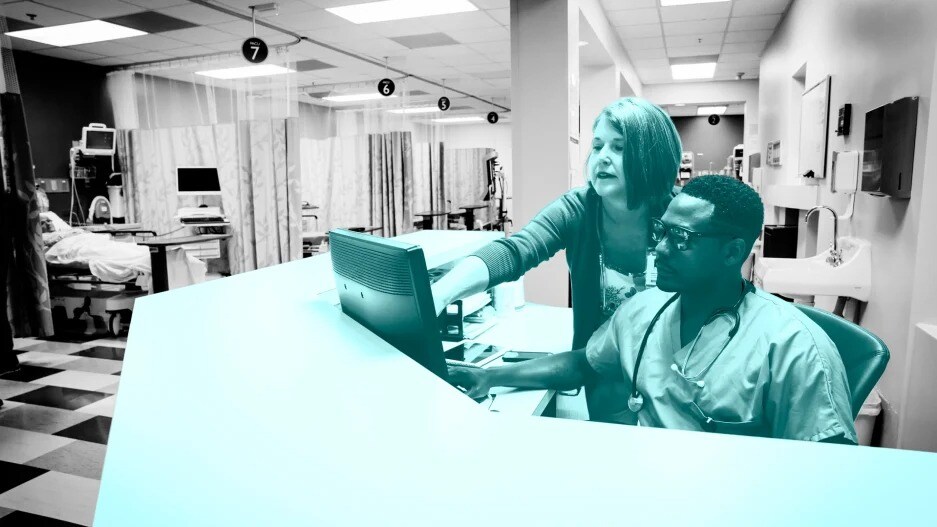- | 11:00 am
Healthcare operations are key to lasting, positive change
Health systems need to invest in software for workforce management and provider data management.

The COVID-19 pandemic was a true stress test for our healthcare system. Our capacity to deliver care was pushed to its limits, and systemic weaknesses were pulled into the light. While our frontline workers served heroically, those weaknesses—from a lack of personnel to misaligned resources—led to understaffing, burnout, and worse patient outcomes.
Today, we have a limited window of time to address the failings the pandemic exposed and make lasting, positive changes. Experts warn that a high number of early-season flu cases and an uptick in respiratory syncytial virus (RSV) are signs that this winter could pose further significant challenges to our healthcare systems. Growing COVID-19 caseloads might stretch our resources even more. Future unforeseen challenges will undoubtedly test our healthcare structure and operations. If we want to achieve better outcomes in the future, we need to act now by addressing the systemic weaknesses that leave healthcare organizations exposed.
Doing so starts with a shift in philosophy. When we think about improving healthcare outcomes, we tend to prioritize the most visible aspects of the healthcare experience: the patient- and provider-facing elements. But the truth is that many challenges in the healthcare industry are fundamentally operational. They start with the essential components that make a health system run, like provider credentialing and enrollment, scheduling, and clinical communication and collaboration. Neglecting foundational workforce and provider data management functions wastes precious resources and create inefficiencies that permeate our health systems. In relatively good times, those inefficiencies are problematic. During times of crisis, they can lead to understaffing, breakdowns in quality, and whole systems failing to sustain themselves financially—realities that worsen patient outcomes.
The right tools can help
There are two specific healthcare operations elements where the right tools can make a difference, even with tight resources.
The first is in workforce management. We’ve all seen the data points. Healthcare and frontline workers have been pushed well past their breaking points, with many deciding to leave their professions altogether, creating additional pressure on those who remain. These realities are natural responses to dissatisfaction with working conditions—and it’s a sign that hospitals have room for improvement in supporting clinicians by equipping them with the right tools. Providing healthcare staff with a means for centralized and streamlined communication, for example, can boost workforce satisfaction, conserve team members’ valuable time by giving them appropriate focus, and help to stem turnover, all while improving patient care outcomes. Tools like this one improve clinical collaboration and create more efficient care delivery at the same time.
The second area with an opportunity to improve is the technology we use to manage provider data. Provider data powers healthcare, making it essential for all healthcare participants. Patients rely on accurate, up-to-date directories to choose in-network providers who are conveniently located and offer the primary care or specialized services they need. Providers submit their data to be credentialed and receive privileges to treat patients. Health plans and health systems need accurate provider data for referrals, claims payment, payer/provider contracting, network management, and provider performance monitoring to enable safe, high-quality care. We can alleviate administrative burdens on providers by using a single data profile for every credentialed and referring provider and by securely sharing updates enterprise-wide.
Software investments are vital
The good news is that we’re already seeing a movement toward increased software investment in these key healthcare operations areas, even in the midst of a tough economic environment. Hospital systems are seeking technology that has these capabilities and can integrate seamlessly into their current technology stack because they recognize the impact that healthcare-specific, user-friendly tech can have on their overall operations. In the 2022 symplr Compass Survey and Report, for example, 84 percent of healthcare executives reported that having a streamlined IT infrastructure is an important factor in their ability to retain clinicians.
These investments are urgent. Although the height of the COVID-19 pandemic appears to have passed, our healthcare systems will no doubt face similar strains going forward. We need to act before the next great health challenge. It’s time to invest in better tools, technology, and operational infrastructure to strengthen our system and save lives.








































